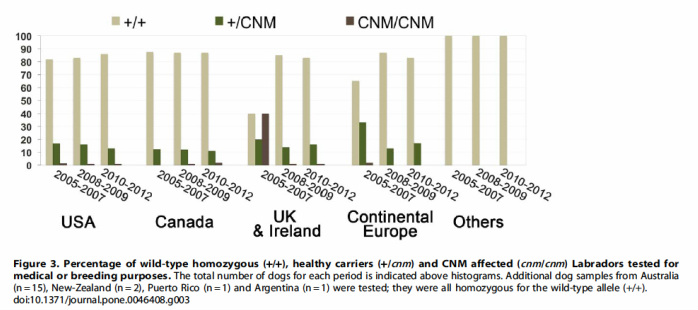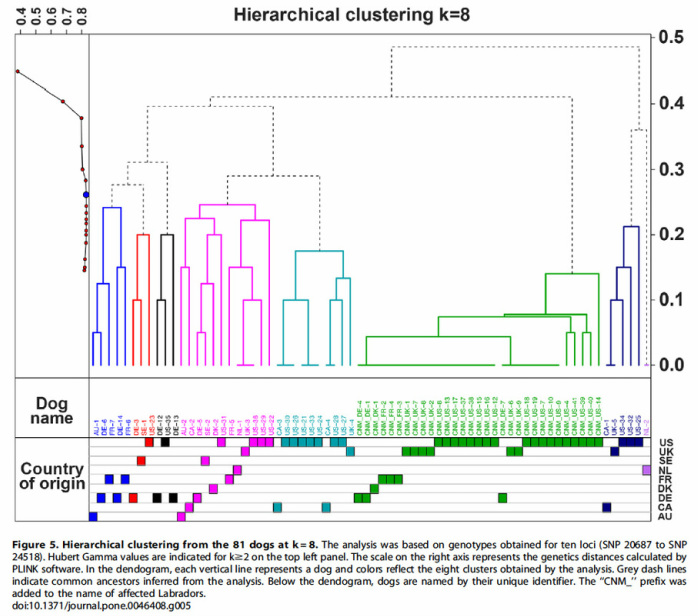
Myopathies are diseases that impair the function of muscle. There are many different kinds, and there is one called centronuclear myopathy (CNM) that is on its way to becoming a real problem in Labrador Retrievers.
CNM in Labradors is caused by an autosomal recessive allele and first popped up in a research colony in France a few decades ago. In the years since, dogs with phenotypically similar myopathies have being reported in the USA, UK, Australia, Canada, and elsewhere in Europe.
Now, the source of the disease has been nailed down to a mutation in a single famous stud dog that has been copied thousands of times in his descendants, which are now distributed all over the world.
Centronuclear myopathy can be gravely disabling. Puppies appear normal when born, but they fail to develop normal muscle strength and are exercise intolerant. They can have a normal lifespan, but activity is compromised because the muscles of affected dogs atrophy, especially in the hindquarters.

In this dendrogram, there are 8 genetically distinct clusters, and all of the affected dogs occur in the group colored in green. You can see that these dogs were from all over the world, and they clearly separate from the other clusters of dogs. (This is the same type of cluster analysis used by Oliehoek et al in a genetic analysis of Icelandic Sheepdogs, and also by Ubbink in a study of diseases in several breeds of dogs that I discuss elsewhere on this site.)
This is an excellent example of the potential value of a current pedigree database, which could also have been used (instead of DNA genotyping) to do the cluster analysis that revealed the genetic distribution of CNM in Labradors, and at much less expense. Unfortunately, it also illustrates the amount of genetic damage that can be done by over-representation of a single dog's genes in a breed.
The task now for breeders is to limit the further dissemination of this mutation without compromising the breed's relatively healthy gene pool. Of course, they can do genetic testing on every dog. But a complete and up-to-date pedigree database of the breed and the proper genetic analysis can be used by Labrador breeders to design breeding strategies that will reduce the incidence of this disease without compromising the traits that have made the breed the most popular in the world. (pdf)
Maurer et al 2012 Centronuclear myopathy in Labrador Retriever- a recent founder mutation in the PTPLA gene has rapidly disseminated worldwide. PLoS One 7(10):e46-408.

